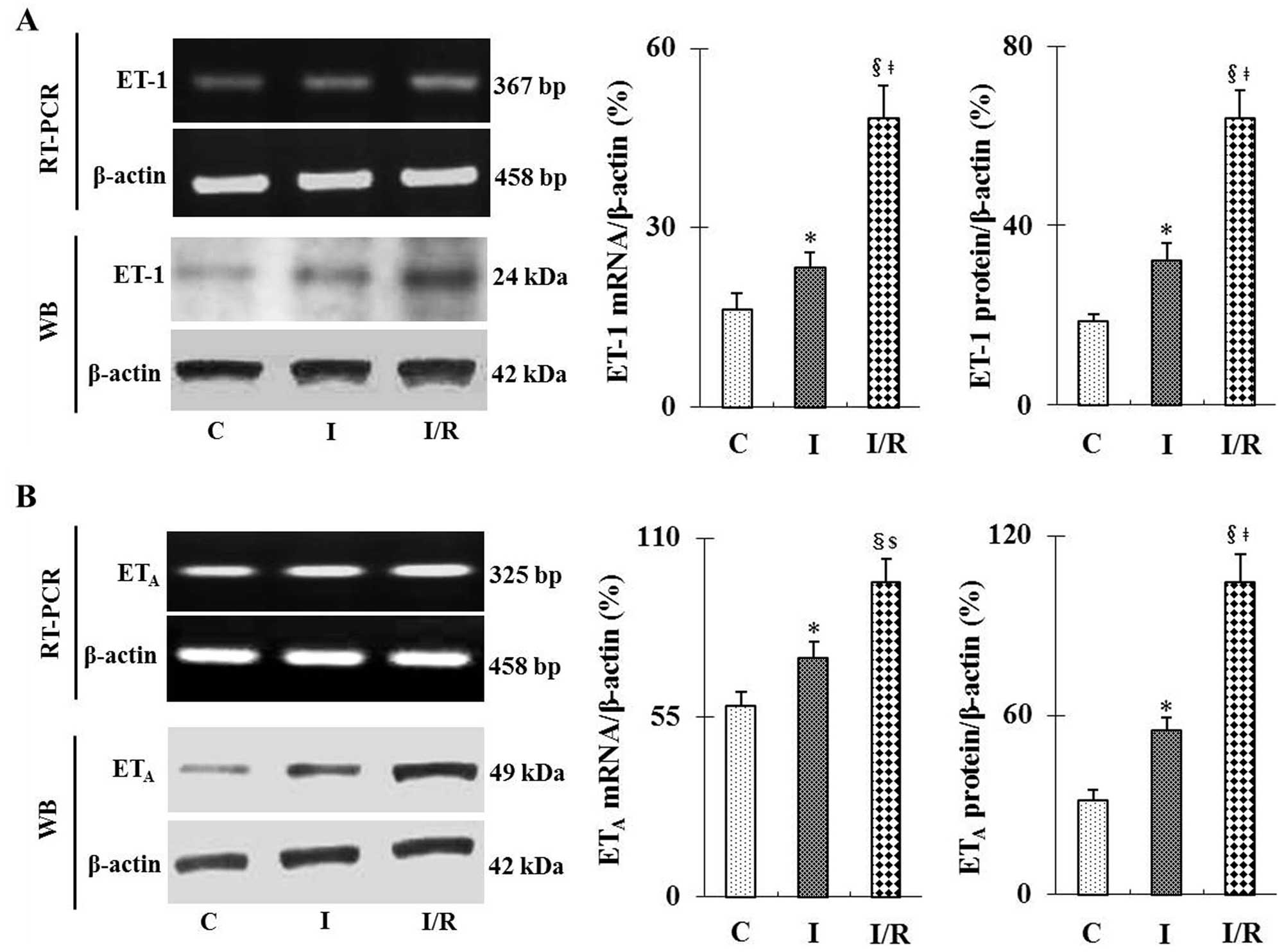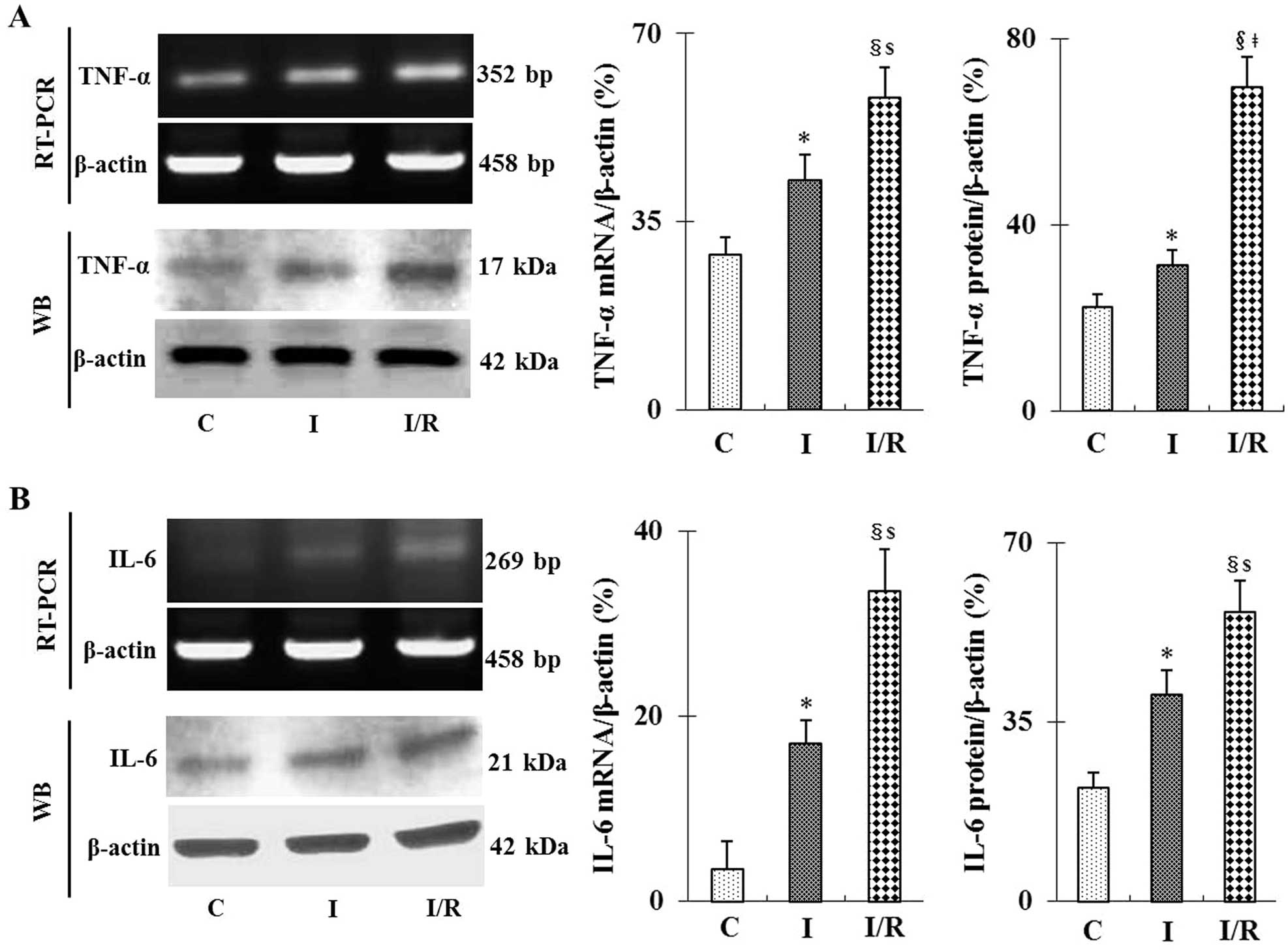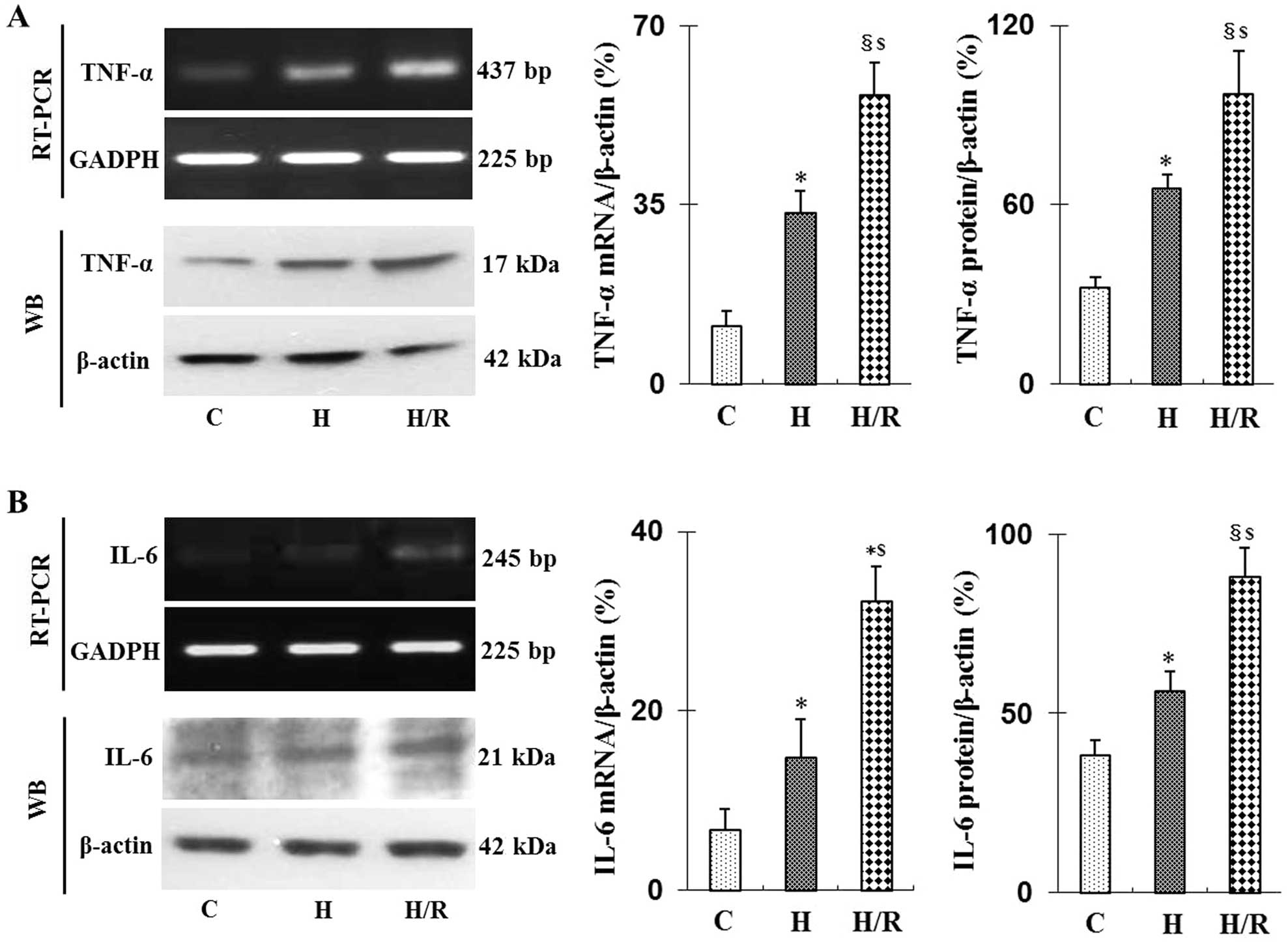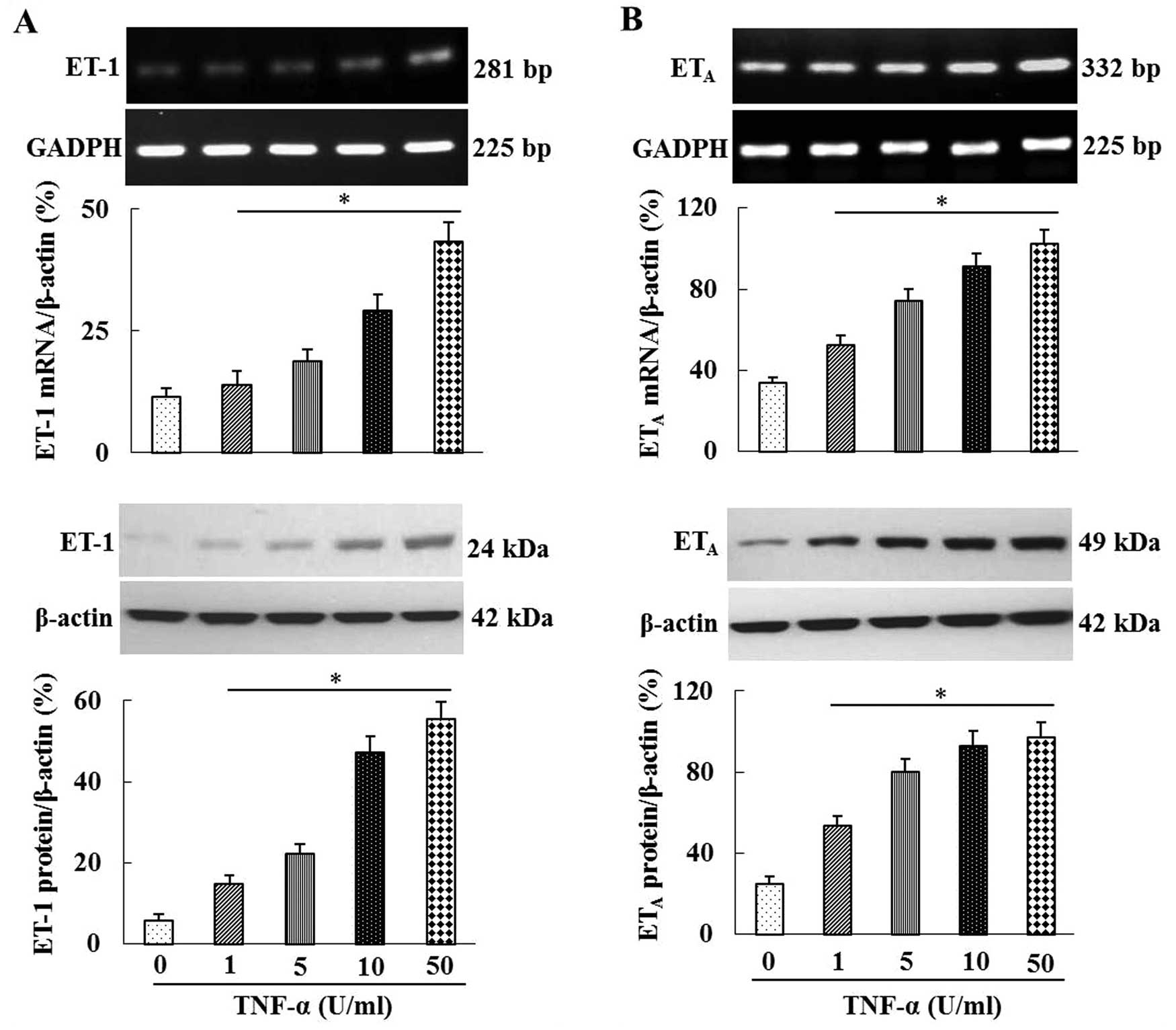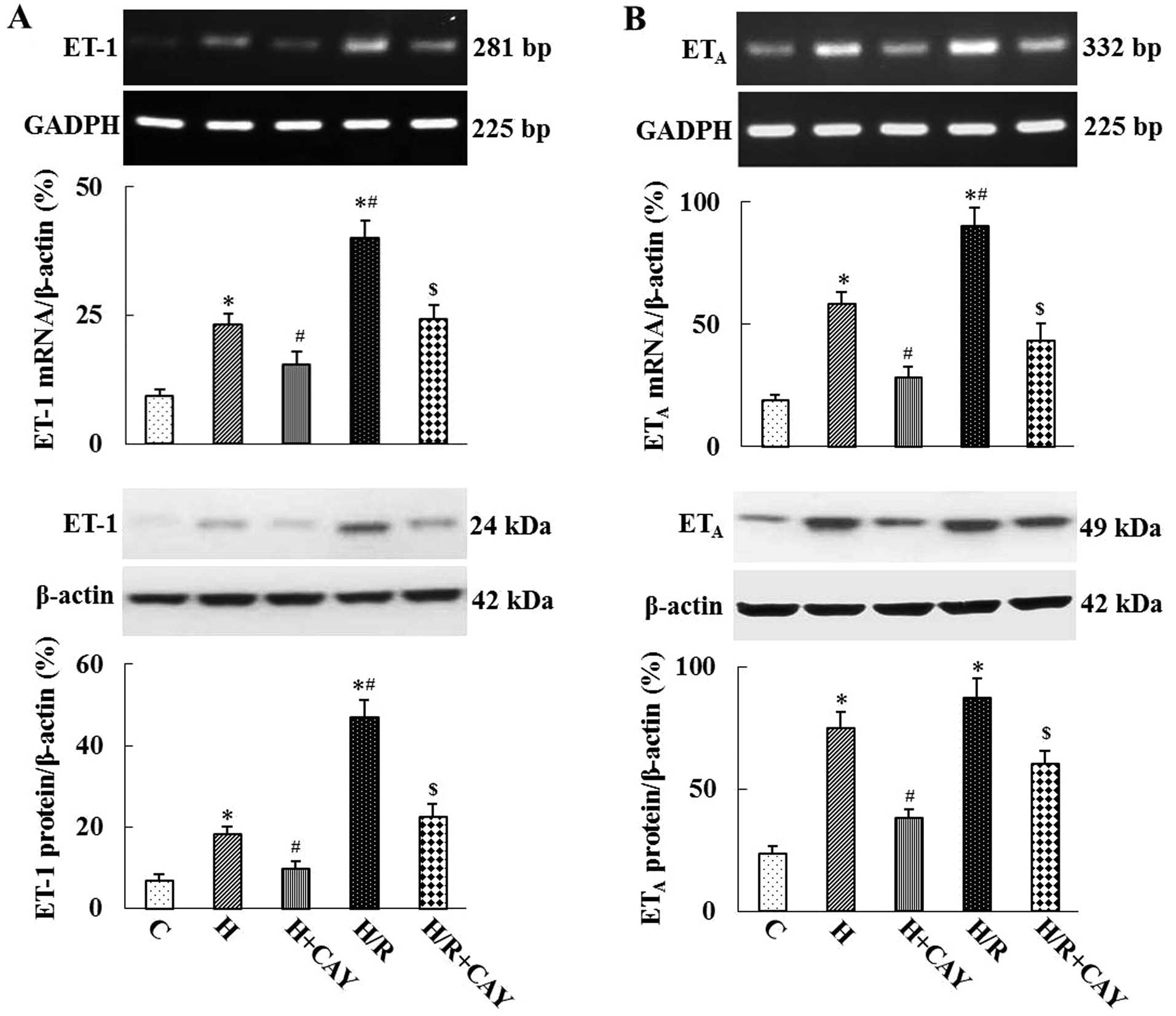|
1
|
Thurman JM: Triggers of inflammation after
renal ischemia/reperfusion. Clin Immunol. 123:7–13. 2007.
View Article : Google Scholar
|
|
2
|
Kher A, Meldrum KK, Wang M, et al:
Cellular and molecular mechanisms of sex differences in renal
ischemia-reperfusion injury. Cardiovasc Res. 67:594–603. 2005.
View Article : Google Scholar : PubMed/NCBI
|
|
3
|
Chen YT, Tsai TH, Yang CC, et al:
Exenden-4 and sitagliptin protect kidney from ischemia-reperfusion
injury through suppressing oxidative stress and inflammatory
reaction. J Transl Med. 11:2702013. View Article : Google Scholar
|
|
4
|
Marasciulo FL, Montagnani M and Potenza
MA: Endothelin-1: the yin and yang on vascular function. Curr Med
Chem. 13:1655–1665. 2006. View Article : Google Scholar : PubMed/NCBI
|
|
5
|
Vlachojannis JG, Tsakas S, Petropoulou C,
et al: Endothelin-1 in the kidney and urine of patients with
glomerular disease and proteinuria. Clin Nephrol. 58:337–343. 2002.
View Article : Google Scholar : PubMed/NCBI
|
|
6
|
Vlachojannis J, Tsakas S, Petropoulou C
and Kurz P: Increased renal excretion of endothelin-1 in nephrotic
patients. Nephrol Dial Transplant. 12:470–473. 1997. View Article : Google Scholar : PubMed/NCBI
|
|
7
|
Chen HC, Guh JY, Chang JM, et al: Plasma
and urinary endothelin-1 in focal segmental glomerulosclerosis. J
Clin Lab Anal. 15:59–63. 2001. View
Article : Google Scholar : PubMed/NCBI
|
|
8
|
Tan RJ, Zhou L, Zhou D, et al: Endothelin
receptor a blockade is an ineffective treatment for adriamycin
nephropathy. PLoS One. 8:e799632013. View Article : Google Scholar : PubMed/NCBI
|
|
9
|
Ong AC, Newby LJ and Dashwood MR:
Expression and cellular localisation of renal endothelin-1 and
endothelin receptor subtypes in autosomal-dominant polycystic
kidney disease. Nephron Exp Nephrol. 93:e802003. View Article : Google Scholar : PubMed/NCBI
|
|
10
|
Watson AM, Li J, Schumacher C, et al: The
endothelin receptor antagonist avosentan ameliorates nephropathy
and atherosclerosis in diabetic apolipoprotein E knockout mice.
Diabetologia. 53:192–203. 2010. View Article : Google Scholar
|
|
11
|
Wihelm SM, Simonson MS, Robinson AV, et
al: Endothelin up-regulation and localization following renal
ischemia and reperfusion. Kidney Int. 55:1011–1018. 1999.
View Article : Google Scholar
|
|
12
|
Abu-Salen N, Ovcharenko E, Awad H, et al:
Involvement of the endothelin and nitric oxide systems in the
pathogenesis of renal ischemic damage in an experimental diabetic
model. Life Sci. 91:669–675. 2012. View Article : Google Scholar
|
|
13
|
Adhami F, Liao G, Morozov YM, et al:
Cerebral ischemia-hypoxia induces intravascular coagulation and
autophagy. Am J Pathol. 169:566–583. 2006. View Article : Google Scholar : PubMed/NCBI
|
|
14
|
Richter CM: Role of endothelin in chronic
renal failure-developments in renal involvement. Rheumatology
(Oxford). 45(Suppl 3): iii36–iii38. 2006. View Article : Google Scholar
|
|
15
|
Daemen MA, van’t Veer C, Denecker G, et
al: inhibition of apoptosis induced by ischemia-reperfusion
prevents inflammation. J Clin Invest. 104:541–549. 1999. View Article : Google Scholar : PubMed/NCBI
|
|
16
|
Lutz J, Thürmel K and Heemann U:
Anti-inflammatory treatment strategies for ischemia/reperfusion
injury in transplantation. J Inflamm (Lond). 7:272010. View Article : Google Scholar
|
|
17
|
Du X, He S, Jiang Y, et al: Adiponectin
prevents islet ischemia-reperfusion injury through the
COX2-TNFα-NF-κB-dependent signal transduction pathway in mice. J
Endocrinol. 218:75–84. 2013. View Article : Google Scholar : PubMed/NCBI
|
|
18
|
De Vries B, Matthijsen RA, Wolfs TG, et
al: Inhibition of complement factor C5 protects against renal
ischemia-reperfusion injury: inhibition of late apoptosis and
inflammation. Transplantation. 75:375–382. 2003. View Article : Google Scholar : PubMed/NCBI
|
|
19
|
Wendel M, Knels L, Kummer W and Koch T:
Distribution of endothelin receptor subtypes ETA and ETB in the rat
kidney. J Histochem Cytochem. 54:1193–1203. 2006. View Article : Google Scholar : PubMed/NCBI
|
|
20
|
Leonard MO, Kieran NE, Howell K, et al:
Reoxygenation-specific activation of the antioxidant transcription
factor Nrf2 mediated cytoprotective gene expression in
ischemia-reperfusion injury. FASEB J. 20:2624–2626. 2006.
View Article : Google Scholar : PubMed/NCBI
|















